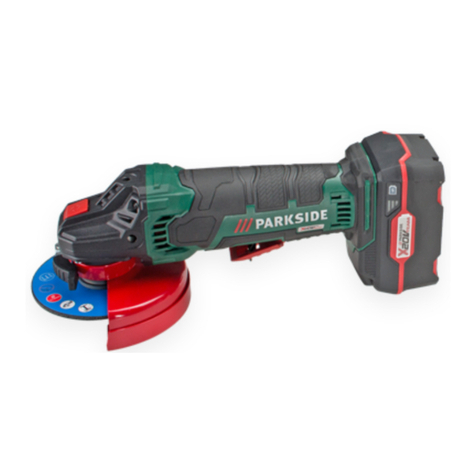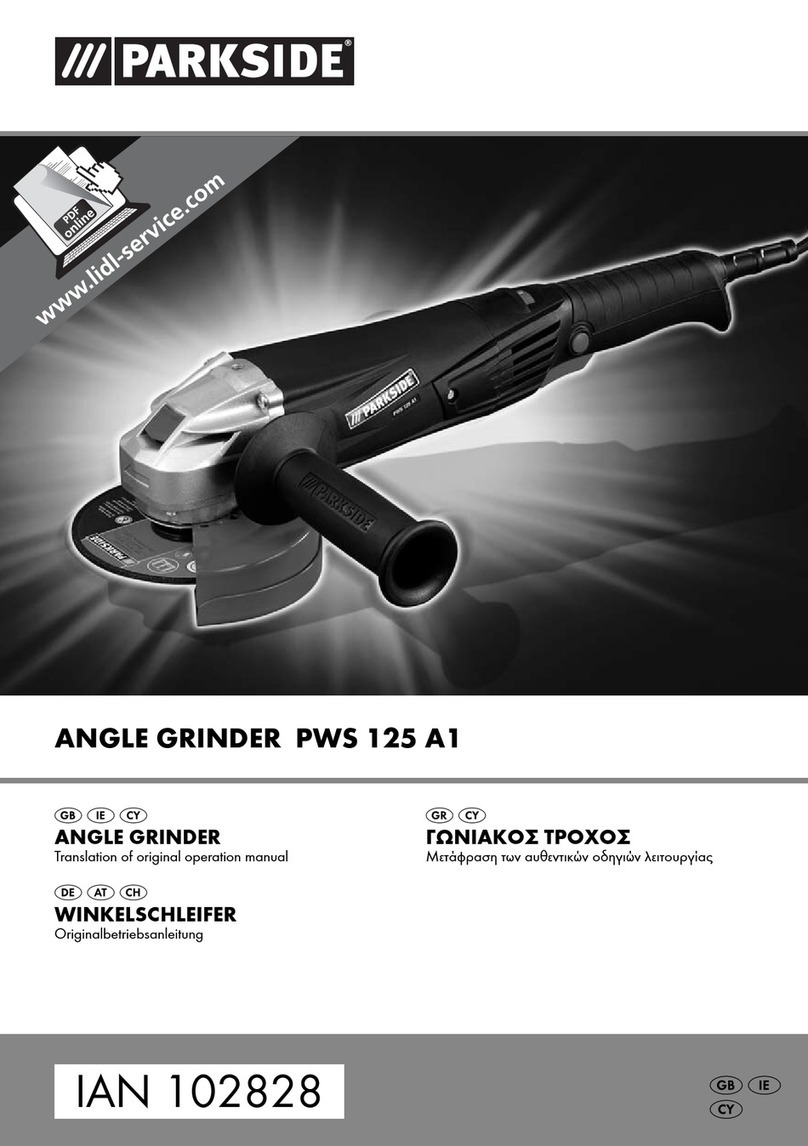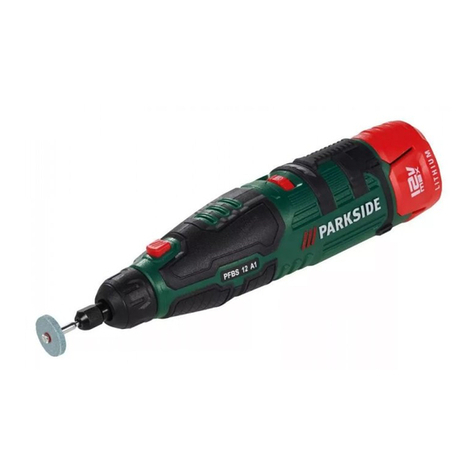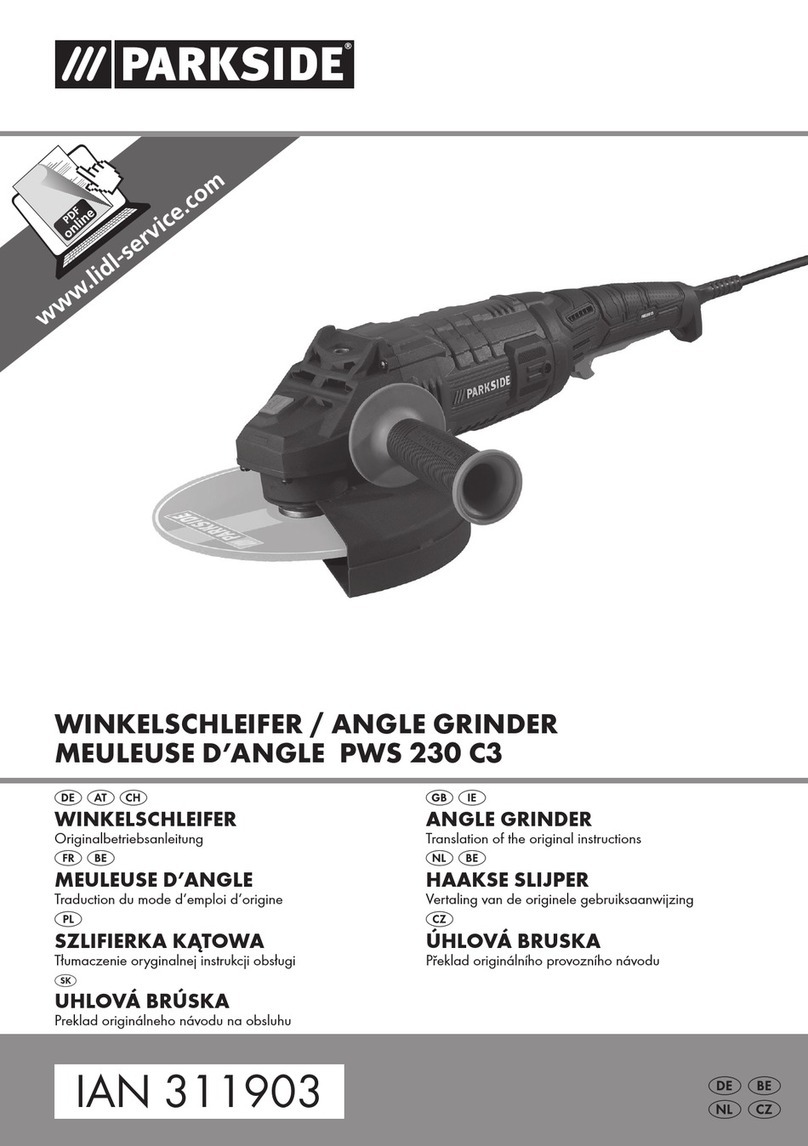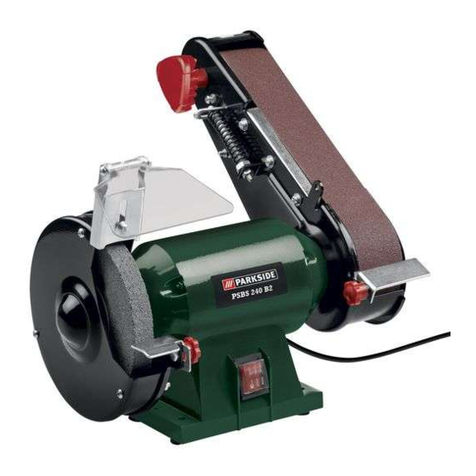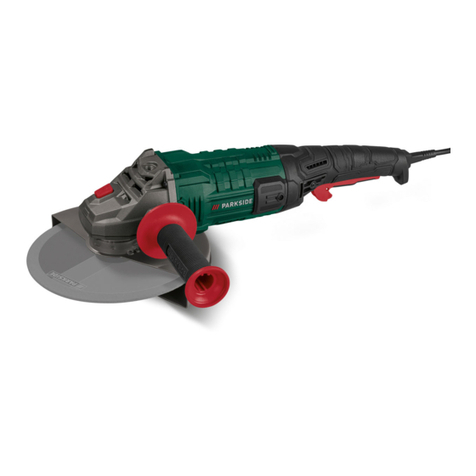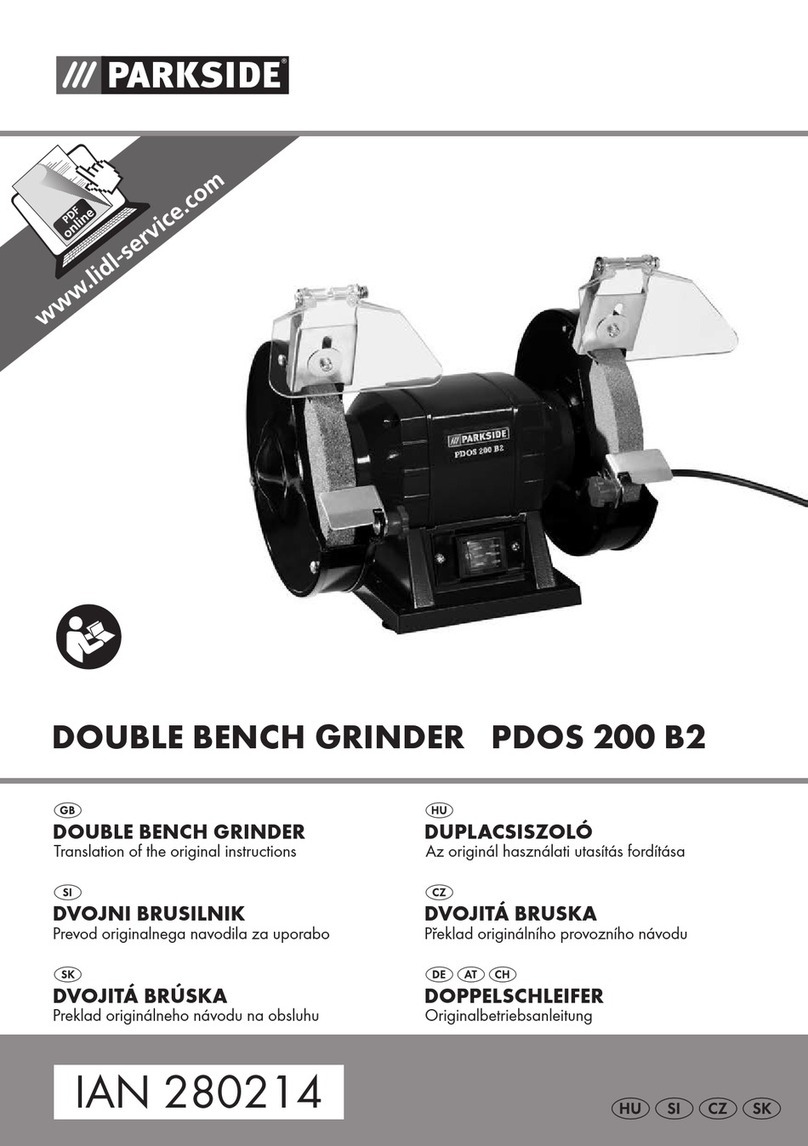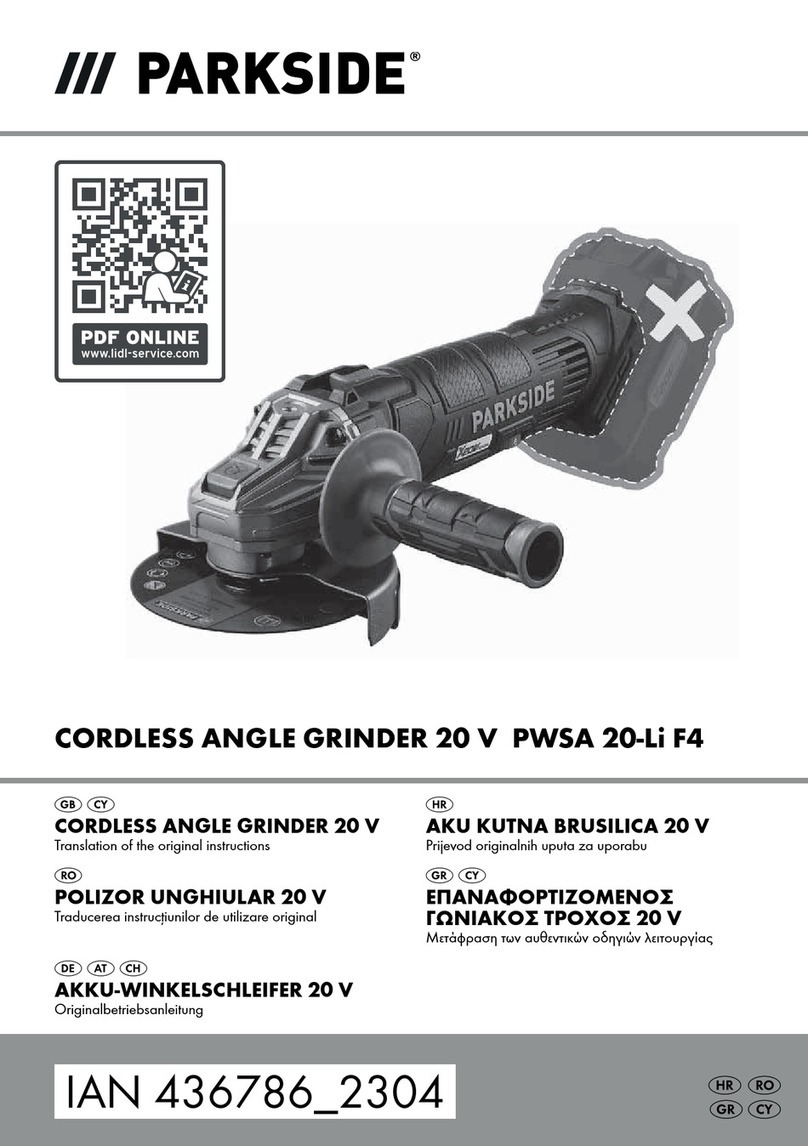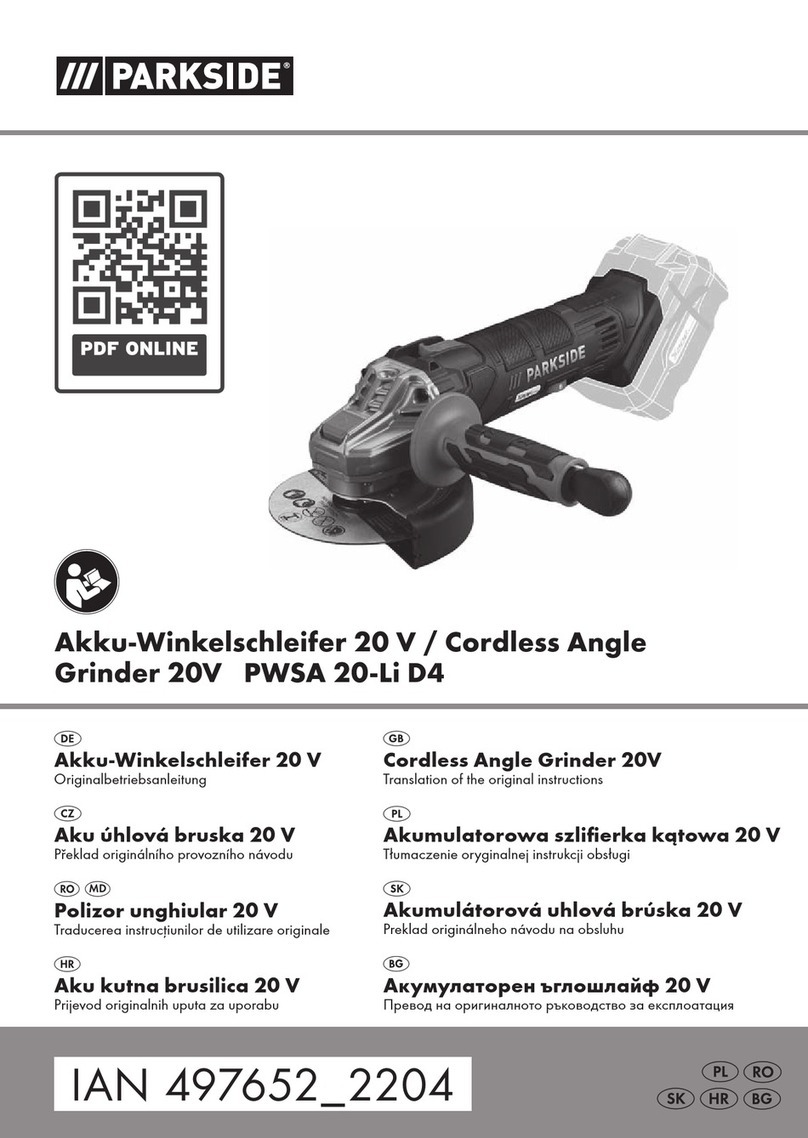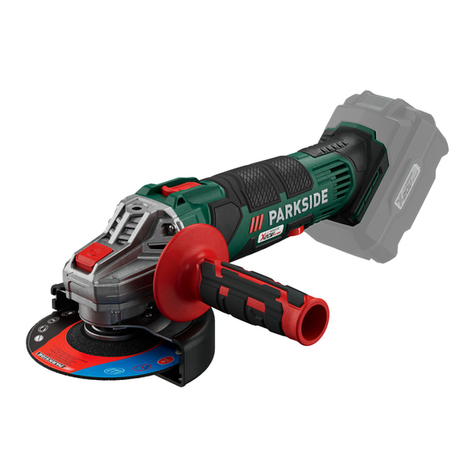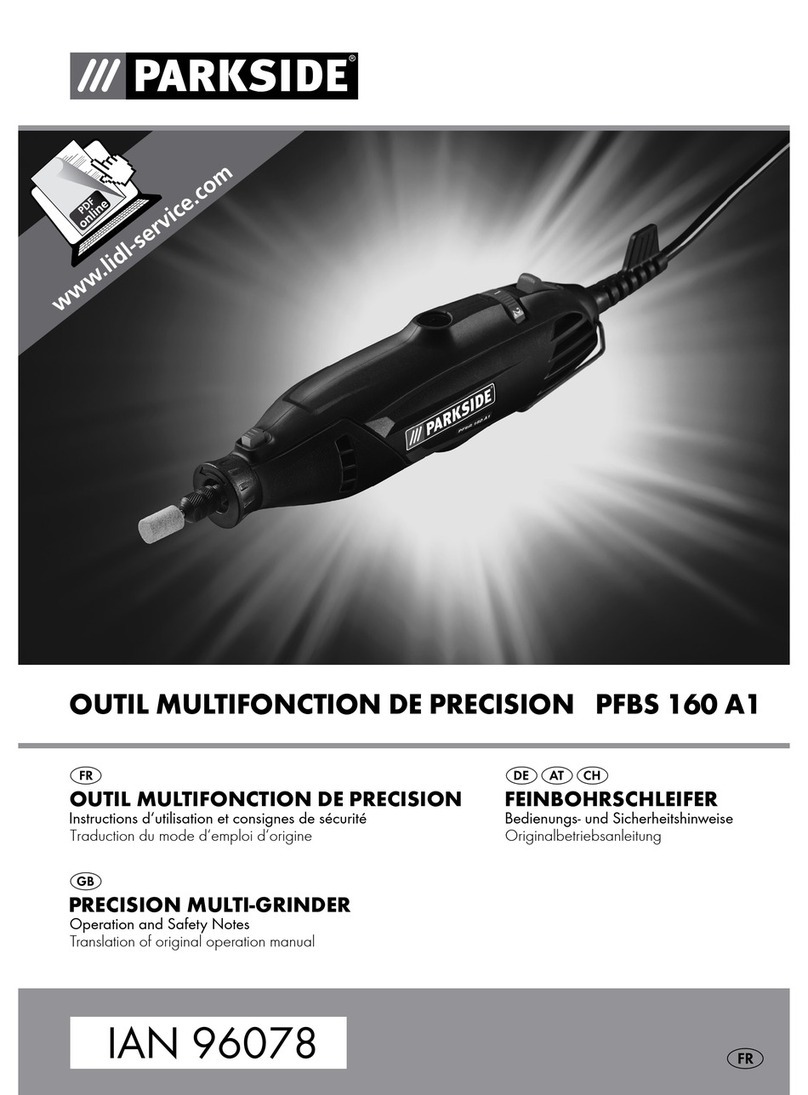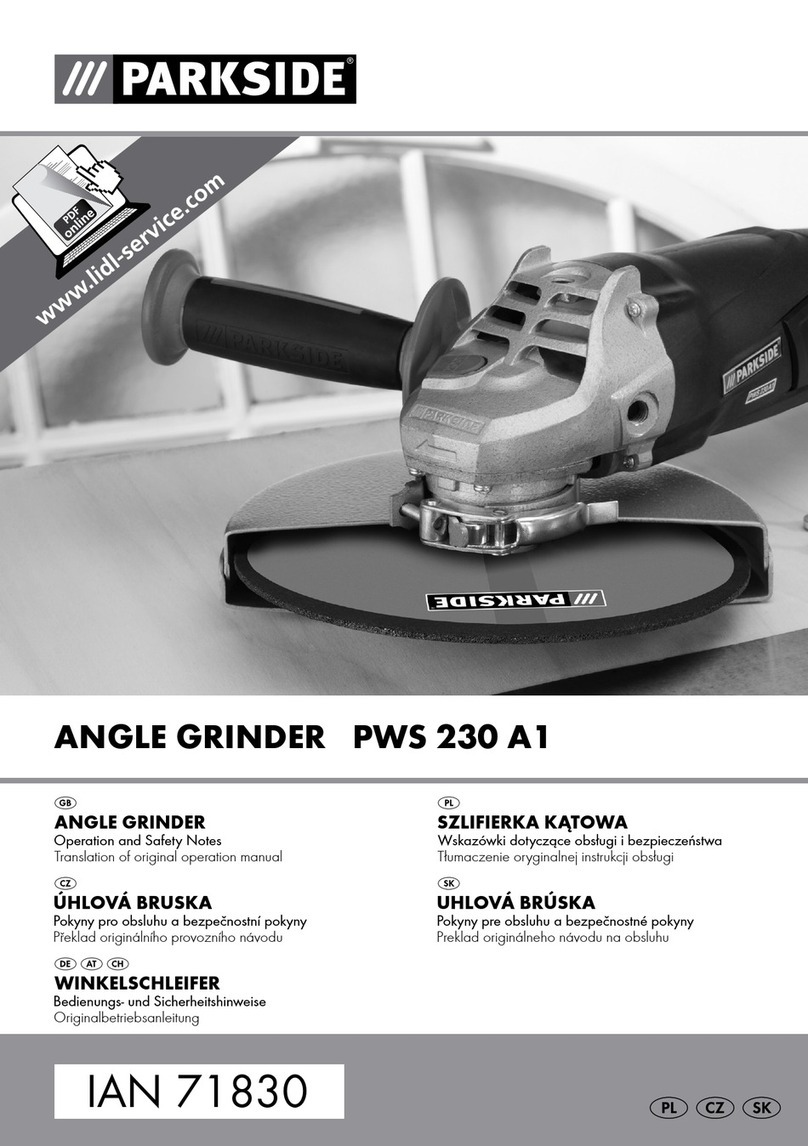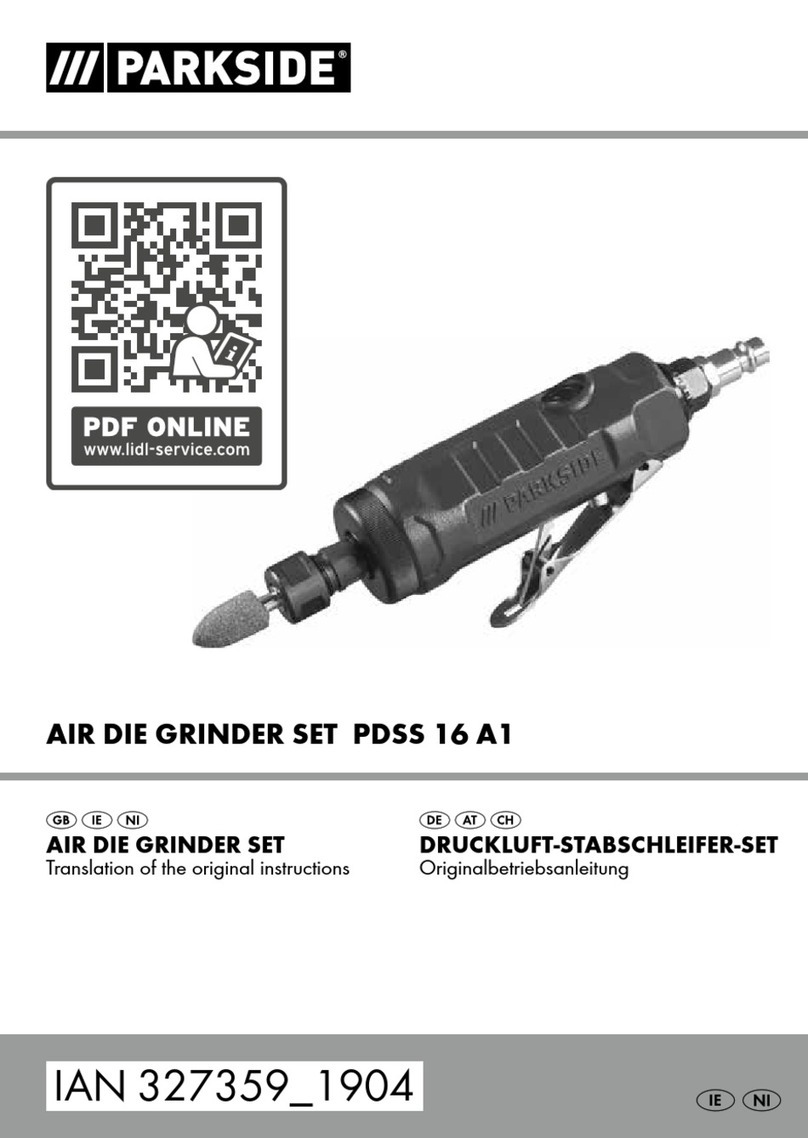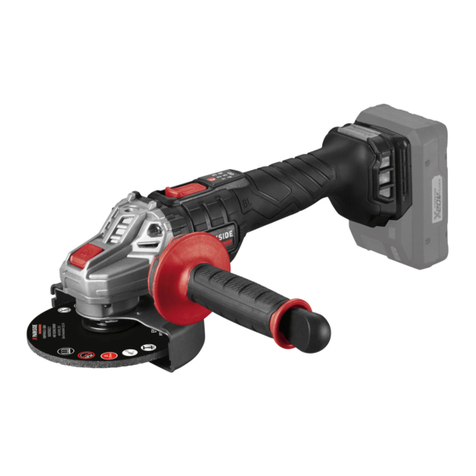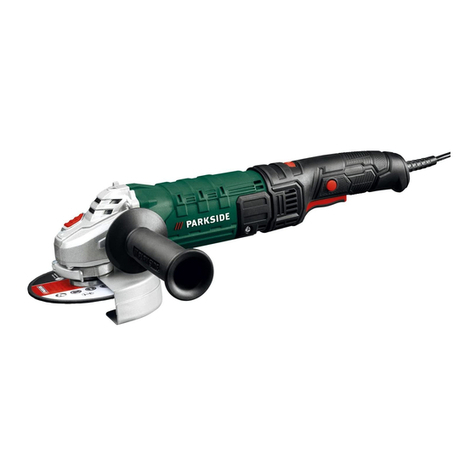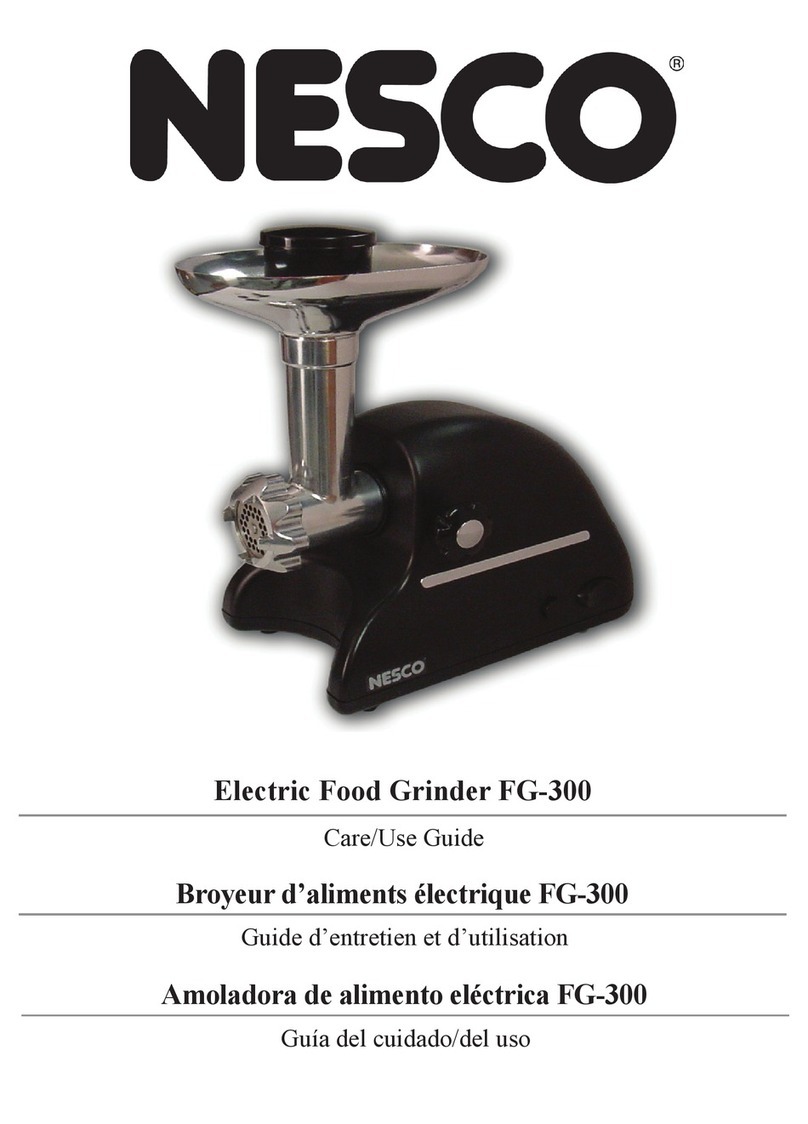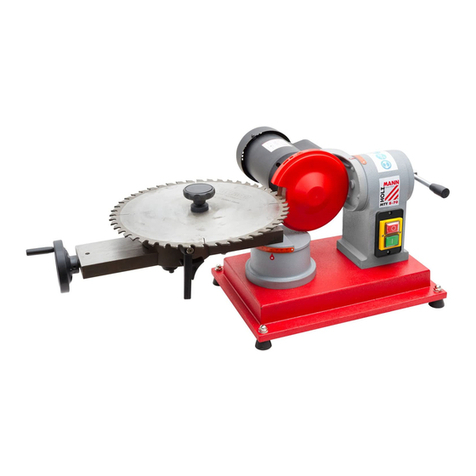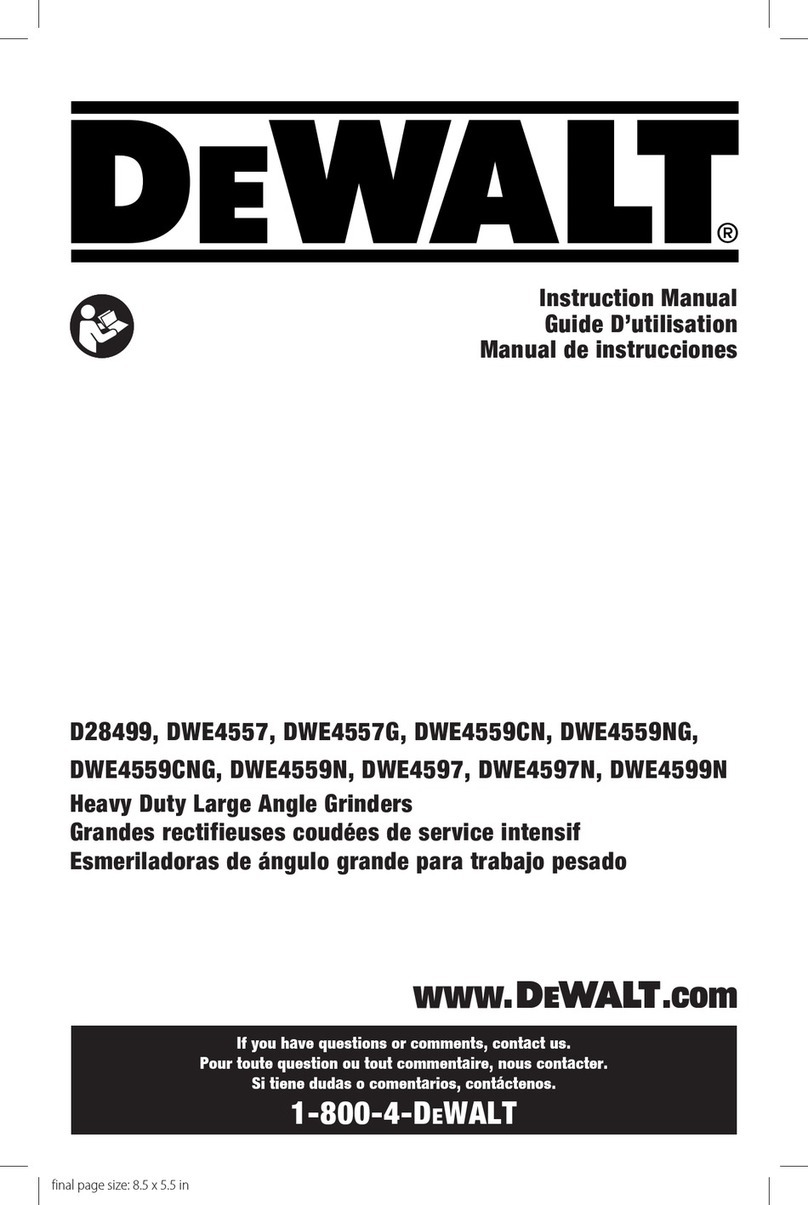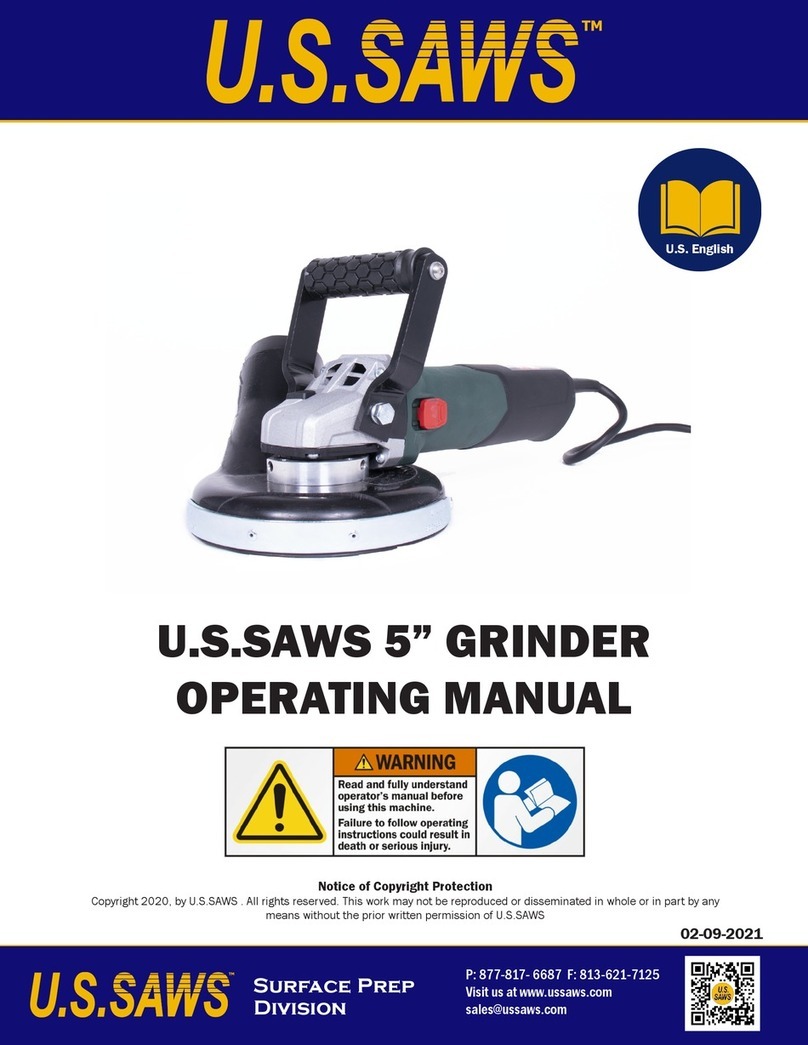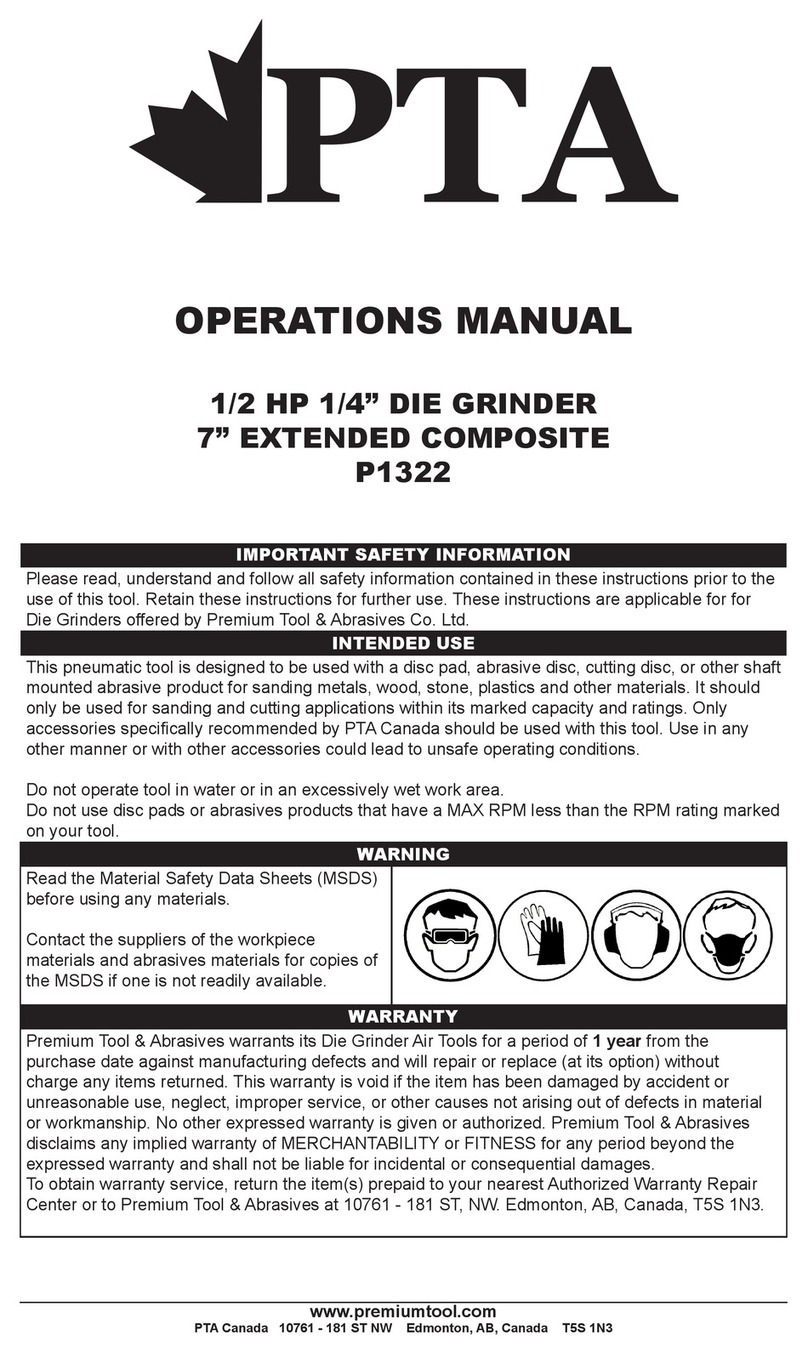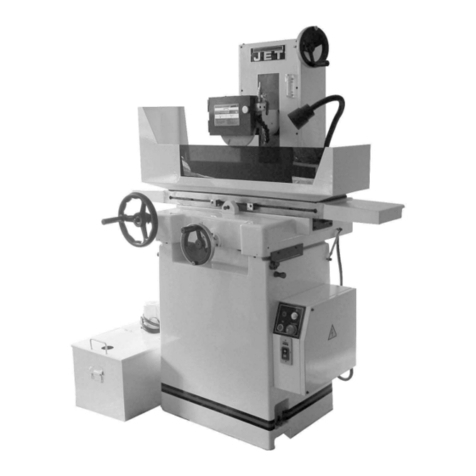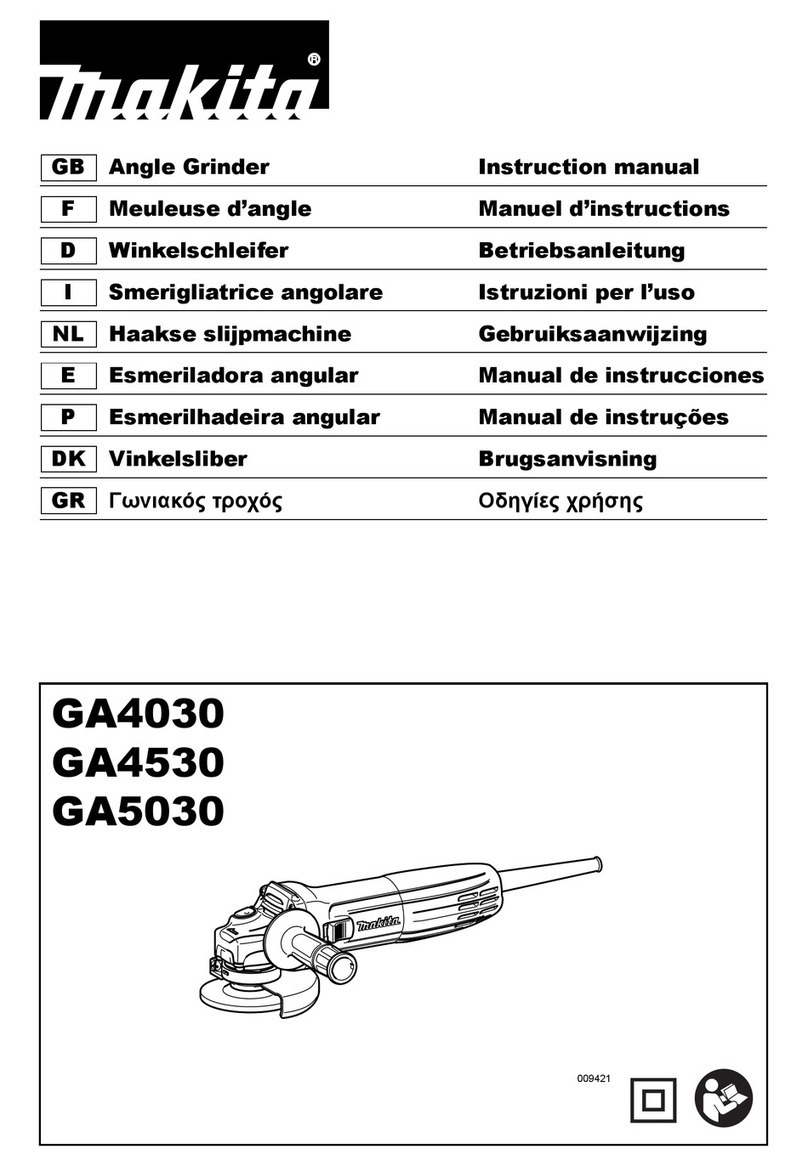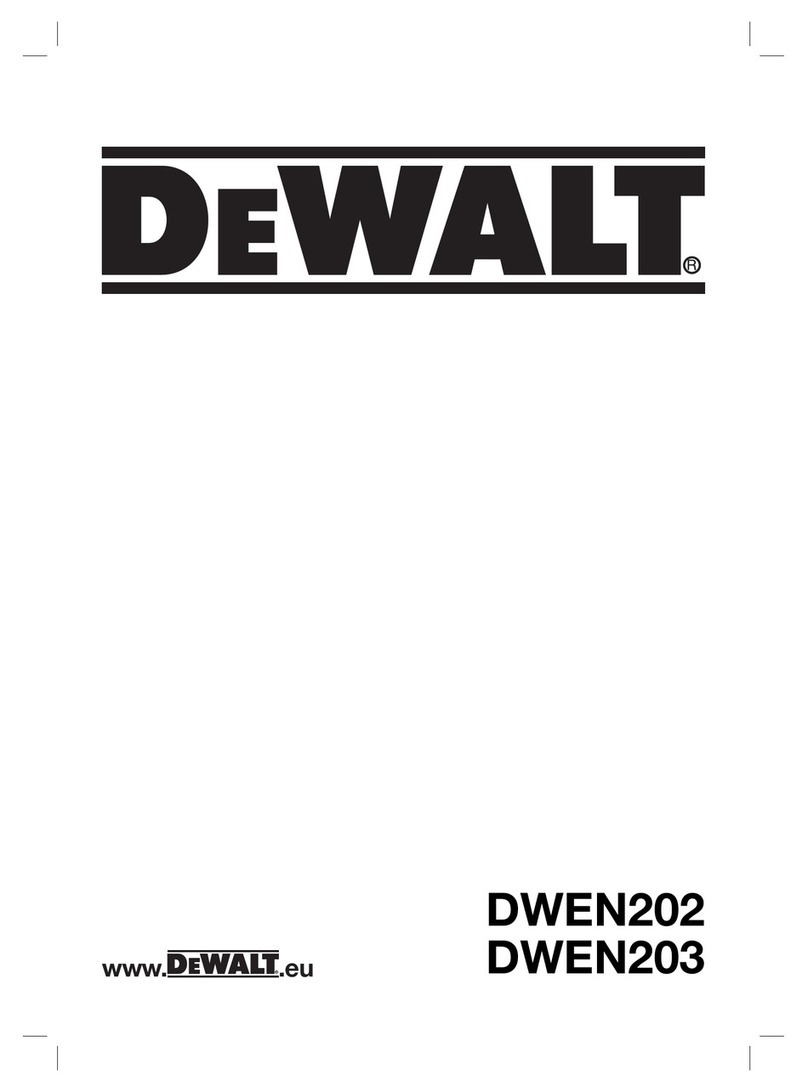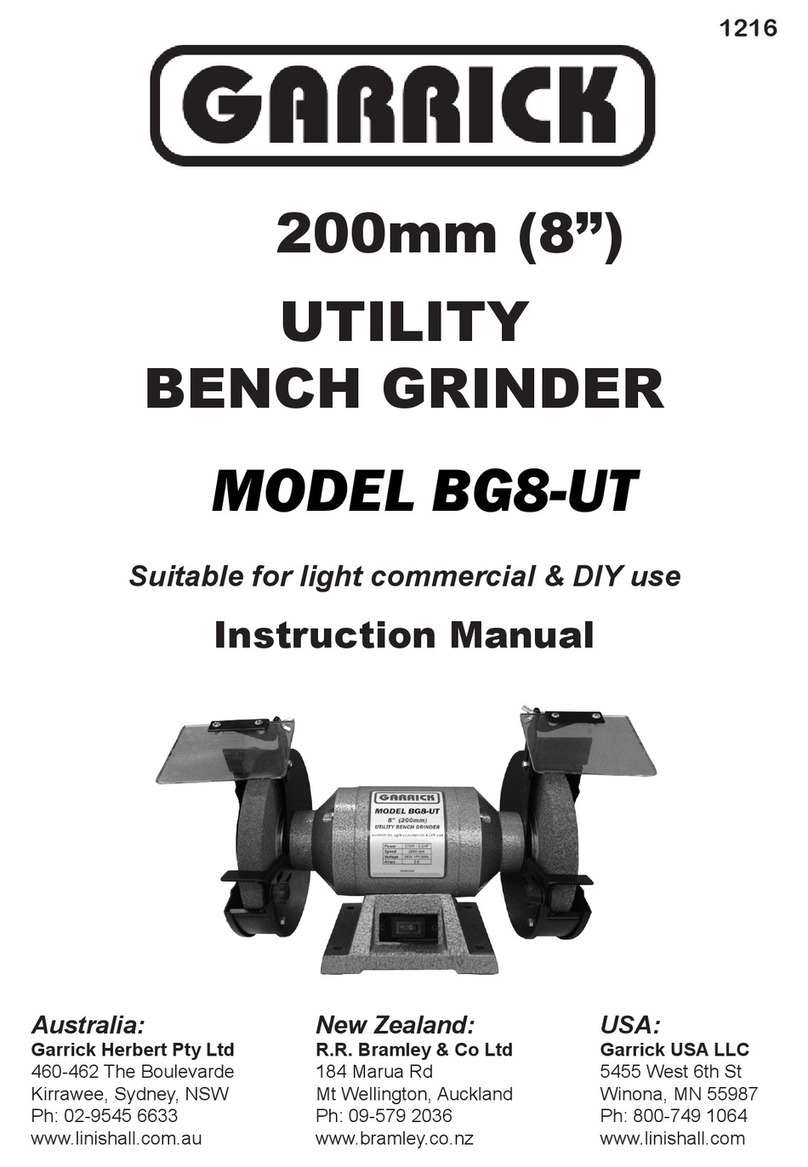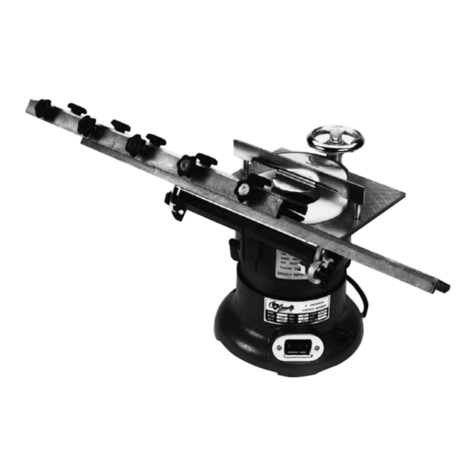
IE
GB NI
9
General safety instructions
instructions refers to mains-operated electric
tools (with a mains cable) and to battery-op-
erated electric tools (without a mains cable).
Safe operation:
• Keep work area clear. Cluttered
areas and benches invite injuries.
• Consider work area environment.
- Do not expose tools to rain. Do not
use tools in damp or wet locations.
Water entering a power tool will in-
crease the risk of electric shock.
- Keep work area well lit.
- Do not use tools in the presence of
.
Power tools create sparks which may
ignite the dust or fumes.
• Guard against electric shock.
Avoid body contact with earthed or
grounded surfaces (e.g. pipes, radia-
tors, ranges, refrigerators).
• Keep other persons away.
Do not let persons, especially children,
not involved in the work touch the tool
or the extension cord and keep them
away from the work area.
• Store idle tools. When not in use,
tools should be stored in a dry locked-
up place, out of reach of children.
• Do not force the tool.
the job better and safer at the rate for
which it was intended.
• Use the right tool.
- Do not force small tools to do the job
of a heavy duty tool.
- Do not use tools for purposes not
intended; for example do not use cir-
cular saws to cut tree limbs or logs.
Use of the power tool for operations dif-
ferent from those intended could result
in a hazardous situation.
• Dress properly.
- Do not wear loose clothing or jewel-
lery, they can be caught in moving
parts.
- Anti-slip footwear is recommended
when working outdoors.
- Wear protective hair covering to con-
tain long hair.
• Use protective equipment.
- Use safety glasses.
- Use face or dust mask if working op-
erations create dust.
• Connect dust extraction equip-
ment.
connection of dust extraction and col-
lecting equipment, ensure these are con-
nected and properly used.
• Do not abuse the cord. Never
yank the cord do disconnect it from the
socket. Keep the cord away from heat,
oil and sham edges.
• Secure work. Where possible use
.
safer than using your hand.
• Do not overreach. Keep proper foot-
ing and balance at all times.
tool in unexpected situations.
• Maintain tools with care.
maintained power tools.
- Keep cutting tools sharp and clean for
better and safer performance.
- Follow instruction for lubricating and
changing accessories.
damaged have them repaired by an
authorized service facility.
and replace if damaged.
- Keep handles dry, clean and free
from oil and grease.
• Disconnect tools. When not in use,
before servicing and when changing

